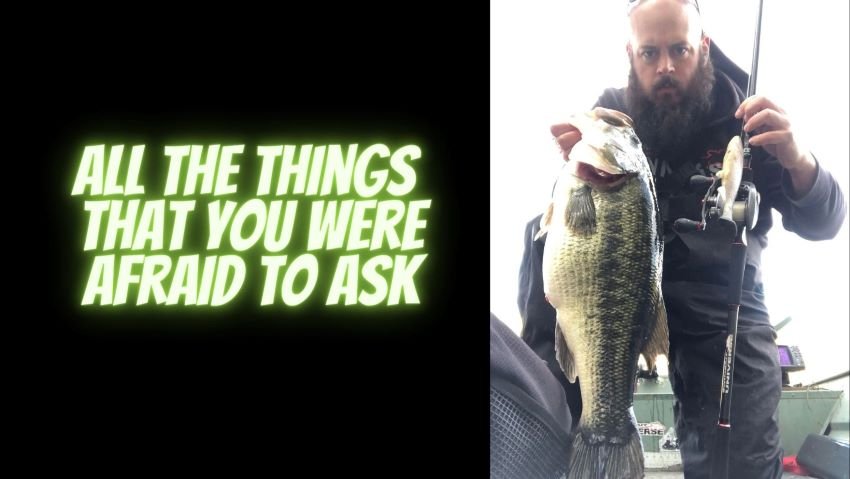Swimbaits 101 With Wayne Campbell
No matter what niche or subculture you fall into, you’ll have to navigate jargon, inside jokes and institutional prejudices that can make it hard for a newcomer to know what’s going on. Even after 40-plus years of fishing, I find that to be true whenever I’m trying to access a new group – whether it’s tuna popping freaks or Ned Riggers.
The swimbaiters have been a welcoming bunch, but I still have lots of basic questions, and I figured that many of you might be similarly situated. Fortunately, Swimbait Universe administrator Wayne Campbell was kind enough to sit down and answer some questions, and provide his typically thoughtful responses.
HPFC: How do YOU define a swimbait?
CAMPBELL: That’s one of my most hated questions that ever gets asked, just because it can be as broad or as narrow as you want. If you’re talking swimbait, in my opinion – length I don’t care about – it’s something that mimics the swimming motion of prey. I stop short of saying “fish” because there are terrestrials like rats that are prey species on varying bodies of water. They may not be primary, but they’re often high on the secondary list. The core of it originated with what are called “big baits.” You’re talking eight-plus inches, a few ounces to many ounces. They’re what our hard core guys call big swimbaits.
HPFC: In the hard bait realm, some people seem to use “swimbait” and “glide bait” interchangeably, but they’re obviously not all the same. What’s the difference?
CAMPBELL: I would say that all glide baits could be considered swimbaits, but not all swimbaits are glide baits. They’re a subset of swimbaits, like a wake bait or a crankdown or a multi-piece lipless swimmer. You can break it down into a lot of different stuff. It’s basically just a swimming style that is typically a single joint, two-piece bait.
HPFC: A lot of people seem to think that swimbaits, especially the larger ones, will only work in big bass states like Texas and California. Is that accurate or misguided?
CAMPBELL: I would say there are bodies of water where they respond to wider or tighter swims, louder or silent topwaters. There are definitely things that work better in different places. Do I think that excludes the ability of that bait to work somewhere where a local doesn’t think it will? No. I think any bait can catch fish anywhere you go.
HPFC: When people first get into it, they see the large manufacturers’ baits and they see the so-called “garage baits.” What’s the difference between the two?
CAMPBELL: Availability, hype and price, typically. Durability, too. A lot of times the big manufacturers are a numbers game. They make their coin by making a lot of baits and if some don’t pass QC it’s ok. They have enough in stock that they can just replace it and it’s no sweat off their brow. Your garage guys almost need it to be perfect when they’re doing drops as small as 10 baits up to 200-300 at a show. That’s still small in the grand scheme of things, but it’s on the larger end of the manufacturing of the garage builders. Even with those small numbers, if one doesn’t swim correctly or breaks through no fault of the user – they’re out that bait and the chatter spreads like wildfire. It only takes one screwup for your whole company to be considered a piece of shit. Fair or not, sometimes that’s accurate, but a lot of times you get some miserable people. I’m not going to lie about it. It doesn’t matter if it’s made of gold and catches a 10-pounder on every cast, they’ll find something wrong about it online to complain about it and try to rally the troops, find somebody that supports their position.
HPFC: Speaking of the complainers, you must get asked all the time why some of them cost so much.
CAMPBELL: Because people will pay it. That’s really the only thing I can come up with. I have been on records multiple times that there is a line I will not spend over. It doesn’t mean it’s not worth it. It doesn’t mean that other people should or shouldn’t. I will never tell another guy how to spend his money. If you’ve got it, it’s yours to do what you want with it. I will also never put a price on another man’s time and experience and expertise in building these things. I have played around in my garage just to see if I could do it, and no thanks, I’ll just buy them. These guys that can consistently kick out baits that are carbon copies of each other out of resin or wood or other materials they decide to use, there is an art associated with that and a skill level that I and 99% of the populace do not possess.
HPFC: What are the general feelings in the community about people flipping baits?
CAMPBELL: I wouldn’t even know what the percentage would be. It’s probably split right down the middle. We have a strong capitalistic thought process in the realm, but it sways more towards the actual builders themselves being the ones to gain – so there is a negative connotation with flipping, especially because a lot of guys that would legitimately like to fish a lot of these baits can’t get them. The flipping price is cost-prohibitive to acquire the bait that they want to try. That being said, I’m not big on putting up with boo-hooing that “I can’t get this” when there are a thousand other baits out there and probably 10 other ones that do the same thing or better than the ones that people cry because they can’t get. There are options out there. It’s not life or death. It’s not anything that your life or your enjoyment of the outdoors is dependent on, so I’m supremely intolerant of bitching that you can’t get something as meaningless as a fishing bait.
HPFC: Why are so many of them sold unpainted?
CAMPBELL: I equate it to grown man Legos at this point. Guys like to have custom stuff. Anybody that’s in any kind of hobby – sneakers, cars, trucks – nobody likes stock. You’ll have your guys that all they want to do is fish stock stuff and other guys where if it’s not custom painted they don’t want anything to do with it. It’s one less that the builder has to worry about if they can just pour it, sand it, throw some hooks and split rings in a bag and send it. At that point you’re hands off. It’s one less step. A lot of guys – Big Game Customs is a good example – his neighborhood HOA came down on him because his exhaust fan was blowing paint fumes out. They shut his paint booth down. He’ll only sell blanks now because he has no ability to paint them anymore. Personally, I have a beard so I can’t wear a respirator. The paint and the solvents they use are not good for you to breathe in. If you don’t have a good respirator system you’re just asking for trouble.
HPFC: Are swimbaits as we defined them a viable tournament tool?
CAMPBELL: In the right scenario, yes. I never fault a guy for swinging for the fences, especially if his position is pretty much solidified without weighing in an astronomical bag. There are baits that you can use in a search capacity: some of your boot-tailed swimmers, glide baits. You can cover a lot of water if you’re proficient with it. I’m actually surprised that more of the big name guys don’t, just because they are so adept at finding fish, which is one of the main points. With the advent of forward-facing sonar and the ability to watch that thing come by a targeted fish, I’m really surprised more of them don’t employ it. If they are, they’re very good at being tight-lipped about employing it.
HPFC: Does the average guy who wants to get into this world need specialized tackle from the start?
CAMPBELL: Not necessarily. The more someone is able to buy a specialized rod, more than anything. It’s your rod that is going to be a dealbreaker for a lot of people. Most people have a 200-sized reel, which has enough line capacity for these lures. But there’s a big difference between pitching a 3/8 ounce jig and taking that rod just because it’s rated up to 2 ounces and throwing a 2 ounce bait all day. You’ll definitely notice the difference. There is a reason rods are purpose-built for this technique, just as they are for dropshotting. You wouldn’t take an 8-foot swimbait stick and try to fish a 1/32 ounce dropshot with a Roboworm in 40 feet of water with it. Technique-specific equipment makes you more efficient and better at what you’re doing.
HPFC: As one of the ringleaders of the community, how would you describe the culture that has sprung up around swimbaiting?
CAMPBELL: I love it. I fight daily with the naysayers. You have a lot of old school guys who don’t want it to be mainstream, a lot of mainstream guys that still view it as a niche. I want to keep pushing it forward because I see what it has done for my fishing, adapting it to what I knew how to do. That’s why I think not living in a big fish capital, it’s applicable anywhere in the country. We have members everywhere and every single one of them has notably caught bigger fish since adopting the mantra of big baits, big fish. That doesn’t take away from the fact that a jig has probably caught more big fish than anything, or a 10-inch Power Worm. Each thing has guys that are specialized in that approach. These just have a mystique to them. I think a lot of it is the cost, a lot of it is the size of some of the stuff that we throw, but I believe in the technique. I believe that it is a great tool to learn to use. I don’t think guys should start with it. You should have a base knowledge. You should know where to find fish. You should know seasonal patterns. You should know how to set up with the sun and how to utilize the wind. All of those skills are more easily honed by not chucking around 4 ounces of rubber all day.
I think the community is awesome – the way it comes together in times of need, putting differences aside. The overall fanatic nature and the fervor that these guys use to approach fishing for big fish, I love it. I can’t get enough of it.
BONUS QUESTION
HPFC: What is a Pat’s?
CAMPBELL: It’s another tool in the box. It’s one of those mystique baits. They’re probably more readily available now than they ever have been, but it was always one of those things like, “I know a guy who knows a guy,” and that’s how you get one. Now it’s a little more widespread. You’ll have guys who get them from flippers, get them from the raffle pages. In the community aspect, it’s pretty much considered a gift to get one purchased at retail. People don’t get them handed to them, but paying retail is pretty much a gift.








